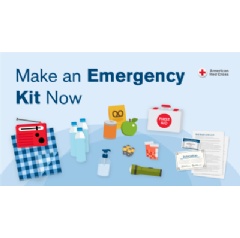Planning a Trip? Tips for Safe Travel this Summer
Statistics show the country is experiencing the lowest number of COVID-19 daily cases in almost a year and many of you are now planning summer vacations. The Centers for Disease Control and Prevention (CDC) has guidelines for travel in the US and internationally, as well as for fully vaccinated people and those who are not.
TRAVEL IN US People who are fully vaccinated with an FDA-authorized vaccine can travel safely within the United States. Wearing a mask is required for everyone on planes, buses, trains and other public transportation.
- You should follow all state and local requirements for wearing masks and social distancing.
- After your trip, self-monitor for COVID-19 symptoms; isolate and get tested if you develop symptoms.
- You do NOT need to get tested or self-quarantine if you are fully vaccinated or have recovered from COVID-19 in the past 3 months.
If you are not fully vaccinated and planning to travel:
- Get tested with a viral test 1-3 days before your trip.
- While you are traveling wear a mask over your nose and mouth.
- Avoid crowds and stay at least 6 feet/2 meters from anyone who is not traveling with you.
- Wash your hands often or use hand sanitizer (with at least 60% alcohol).
- After you travel get tested with a viral test 3-5 days after travel AND stay home and self-quarantine for a full 7 days after travel. Even if you test negative, stay home and self-quarantine for the full 7 days.
- If you don’t get tested, stay home and self-quarantine for 10 days after travel.
INTERNATIONAL TRAVEL Do not travel internationally until you are fully vaccinated. If you are not fully vaccinated and must travel, follow CDC’s international travel recommendations for unvaccinated people.
The COVID-19 situation, including the spread of new or concerning variants, differs from country to country. All travelers need to pay close attention to the conditions at their destination before traveling.
- Before you travel, make sure you understand your destination’s requirements related to travel, mask wearing, testing, or quarantine, which may differ from U.S. requirements. If you don’t follow them, you may be denied entry and required to return to the United States.
- Check the current COVID-19 situation in your destination.
- When coming back to the US, all air passengers coming to the United States, including U.S. citizens and fully vaccinated people, are required to have a negative COVID-19 test result no more than 3 days before travel or documentation of recovery from COVID-19 in the past 3 months before they board a flight to the United States.
TRIP PLANNED? TAKE TO THE HIGHWAY SAFELY Be well rested and alert, use your seat belts, observe speed limits and follow the rules of the road. If you plan on drinking alcohol, designate a driver who won’t drink.
Other tips for a safe trip include:
- Give your full attention to the road. Avoid distractions such as cell phones.
- Use caution in work zones. There are lots of construction projects underway on the highways.
- Don’t follow other vehicles too closely.
- Make frequent stops along the way.
- Clean your vehicle’s lights and windows to help you see, especially at night.
- Turn your headlights on as dusk approaches, and during inclement weather.
- Don’t overdrive your headlights.
- Don’t let your vehicle’s gas tank get too low. If you have car trouble, pull as far as possible off the highway.
- Carry a Disaster Supplies Kit in your trunk.
- Let someone know where you are going, your route and when you expect to get there. If your car gets stuck along the way, help can be sent along your predetermined route.
Download the Red Cross Emergency app for customizable weather alerts. If you are traveling with your pet, the Red Cross has special advice to make your trip more enjoyable and a free Pet First Aid app with an animal hospital locator in case of an emergency.
About the American Red Cross:
The American Red Cross shelters, feeds and provides emotional support to victims of disasters; supplies about 40 percent of the nation’s blood; teaches skills that save lives; provides international humanitarian aid; and supports military members and their families. The Red Cross is a not-for-profit organization that depends on volunteers and the generosity of the American public to perform its mission. For more information, please visit redcross.org or cruzrojaamericana.org, or visit us on Twitter at @RedCross.
( Press Release Image: https://photos.webwire.com/prmedia/5/275587/275587-1.png )
WebWireID275587
This news content was configured by WebWire editorial staff. Linking is permitted.
News Release Distribution and Press Release Distribution Services Provided by WebWire.
